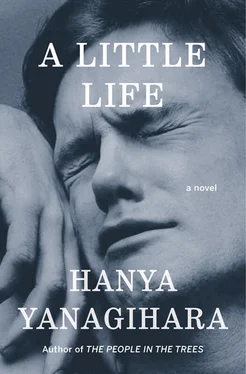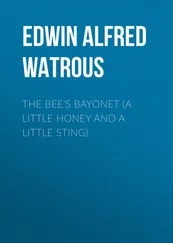Julia had a friend, a man named Dennys, who was as a boy a tremendously gifted artist. They had been friends since they were small, and she once showed me some of the drawings he made when he was ten or twelve: little sketches of birds pecking at the ground, of his face, round and blank, of his father, the local veterinarian, his hand smoothing the fur of a grimacing terrier. Dennys’s father didn’t see the point of drawing lessons, however, and so he was never formally schooled. But when they were older, and Julia went to university, Dennys went to art school to learn how to draw. For the first week, he said, they were allowed to draw whatever they wanted, and it was always Dennys’s sketches that the professor selected to pin up on the wall for praise and critique.
But then they were made to learn how to draw: to re-draw, in essence. Week two, they only drew ellipses. Wide ellipses, fat ellipses, skinny ellipses. Week three, they drew circles: three-dimensional circles, two-dimensional circles. Then it was a flower. Then a vase. Then a hand. Then a head. Then a body. And with each week of proper training, Dennys got worse and worse. By the time the term had ended, his pictures were never displayed on the wall. He had grown too self-conscious to draw. When he saw a dog now, its long fur whisking the ground beneath it, he saw not a dog but a circle on a box, and when he tried to draw it, he worried about proportion, not about recording its doggy-ness.
He decided to speak to his professor. We are meant to break you down, Dennys, his professor said. Only the truly talented will be able to come back from it.
“I guess I wasn’t one of the truly talented,” Dennys would say. He became a barrister instead, lived in London with his partner.
“Poor Dennys,” Julia would say.
“Oh, it’s all right,” Dennys would sigh, but none of us were convinced.
And in that same way, law school breaks a mind down. Novelists, poets, and artists don’t often do well in law school (unless they are bad novelists, poets, and artists), but neither, necessarily, do mathematicians, logicians, and scientists. The first group fails because their logic is their own; the second fails because logic is all they own.
He, however, was a good student — a great student — from the beginning, but this greatness was often camouflaged in an aggressive nongreatness. I knew, from listening to his answers in class, that he had everything he needed to be a superb lawyer: it’s not accidental that law is called a trade, and like all trades, what it demands most is a capacious memory, which he had. What it demands next — again, like many trades — is the ability to see the problem before you … and then, just as immediately, the rat’s tail of problems that might follow. Much the way that, for a contractor, a house is not just a structure — it’s a snarl of pipes engorging with ice in the winter, of shingles swelling with humidity in the summer, of rain gutters belching up fountains of water in the spring, of cement splitting in the first autumn cold — so too is a house something else for a lawyer. A house is a locked safe full of contracts, of liens, of future lawsuits, of possible violations: it represents potential attacks on your property, on your goods, on your person, on your privacy.
Of course, you can’t literally think like this all the time, or you’d drive yourself crazy. And so for most lawyers, a house is, finally, just a house, something to fill and fix and repaint and empty. But there’s a period in which every law student — every good law student — finds that their vision shifts, somehow, and realizes that the law is inescapable, that no interaction, no aspect of daily life, escapes its long, graspy fingers. A street becomes a shocking disaster, a riot of violations and potential civil lawsuits. A marriage looks like a divorce. The world becomes temporarily unbearable.
He could do this. He could take a case and see its end; it is very difficult to do, because you have to be able to hold in your head all the possibilities, all the probable consequences, and then choose which ones to worry over and which to ignore. But what he also did — what he couldn’t stop himself from doing — was wonder as well about the moral implications of the case. And that is not helpful in law school. There were colleagues of mine who wouldn’t let their students even say the words “right” and “wrong.” “ Right has nothing to do with it,” one of my professors used to bellow at us. “What is the law ? What does the law say?” (Law professors enjoy being theatrical; all of us do.) Another, whenever the words were mentioned, would say nothing, but walk over to the offender and hand him a little slip of paper, a stack of which he kept in his jacket’s inside pocket, that read: Drayman 241 . Drayman 241 was the philosophy department’s office.
Here, for example, is a hypothetical: A football team is going to an away game when one of their vans breaks down. So they ask the mother of one of the players if they can borrow her van to transport them. Sure, she says, but I’m not going to drive. And so she asks the assistant coach to drive the team for her. But then, as they’re driving along, something horrible happens: the van skids off the road and flips over; everyone inside dies.
There is no criminal case here. The road was slippery, the driver wasn’t intoxicated. It was an accident. But then the parents of the team, the mothers and fathers of the dead players, sue the owner of the van. It was her van, they argue, but more important, it was she who appointed the driver of her van. He was only her agent, and therefore, it is she who bears the responsibility. So: What happens? Should the plaintiffs win their suit?
Students don’t like this case. I don’t teach it that often — its extremity makes it more flashy than it is instructive, I believe — but whenever I did, I would always hear a voice in the auditorium say, “But it’s not fair!” And as annoying as that word is— fair —it is important that students never forget the concept. “Fair” is never an answer, I would tell them. But it is always a consideration.
He never mentioned whether something was fair, however. Fairness itself seemed to hold little interest for him, which I found fascinating, as people, especially young people, are very interested in what’s fair. Fairness is a concept taught to nice children: it is the governing principle of kindergartens and summer camps and playgrounds and soccer fields. Jacob, back when he was able to go to school and learn things and think and speak, knew what fairness was and that it was important, something to be valued. Fairness is for happy people, for people who have been lucky enough to have lived a life defined more by certainties than by ambiguities.
Right and wrong, however, are for — well, not unhappy people, maybe, but scarred people; scared people.
Or am I just thinking this now?
“So were the plaintiffs successful?” I asked. That year, his first year, I had in fact taught that case.
“Yes,” he said, and he explained why: he knew instinctively why they would have been. And then, right on cue, I heard the tiny “But it’s not fair!” from the back of the room, and before I could begin my first lecture of the season—“fair” is never an answer, etc., etc. — he said, quietly, “But it’s right.”
I was never able to ask him what he meant by that. Class ended, and everyone got up at once and almost ran for the door, as if the room was on fire. I remember telling myself to ask him about it in the next class, later that week, but I forgot. And then I forgot again, and again. Over the years, I would remember this conversation every now and again, and each time I would think: I must ask him what he meant by that. But then I never would. I don’t know why.
Читать дальше












